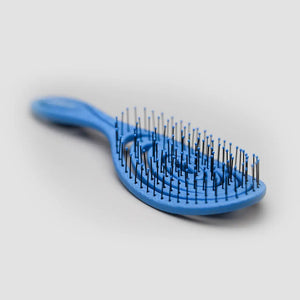
Haartransplantation als Lösung für Folliculitis Decalvans?
Wer unter Folliculitis Decalvans leidet, weiß wie schwerwiegend die Folgen sein können. Haarausfall, entzündete Haarfollikel und Vernarbung sind nur drei der möglichen Auswirkungen der Krankheit. Doch wie soll man das Krankheitsbild behandeln? Ist eine Haartransplantation eine Lösung beziehungsweise überhaupt möglich?
Haartransplantation als Lösung für Haarausfall durch Folliculitis Decalvans
Alopezia Areata, beziehungsweise der erblich bedingte Haarausfall, ist die häufigste Form von Haarverlust weltweit. Rein statistisch gesehen sind etwa jeder zweite Mann und circa 40% der Frauen davon betroffen. Eine weitere bekannte Form des Haarausfalls ist die Alopezia Areata, der kreisrunde Haarausfall. Je nach Ausprägung dieser Erkrankung ist der Haarverlust durchaus reversibel. Bleiben kahle Stellen zurück, können diese unter Umständen mit einer Eigenhaarverpflanzung wieder aufgefüllt werden. Es gibt aber auch Erkrankungen, die relativ selten vorkommen und zum irreversiblen Haarverlust führen. Eine davon ist die Folliculitis Decalvans, die zur vernarbenden Alopezie gehört. Doch was genau hilft Betroffenen von Haarausfall? Welche Optionen stehen zur Verfügung?
Was ist die Folliculitis Decalvans überhaupt?
Einfach erklärt handelt es sich bei dieser seltenen Erkrankung um eine Überreaktion der Haarfollikel auf Staphylokokken. Erste Symptome sind Knötchen und Hautverdickungen, die sich auf der Kopfhaut und den befallenen Hautstellen bilden. Die Folliculitis Decalvans kann auf allen behaarten Körperstellen auftreten, am häufigsten ist aber die Kopfhaut betroffen. Im weiteren Verlauf beginnen die betroffenen Hautstellen, die Haarfollikel, die darunter liegen, sich zu entzünden. Die Folge ist: Die Haare fallen aus. Zurück bleiben unregelmäßig auftretende kahle Stellen, deren Rand vernarbt ist. Also ob dieser Zustand nicht schon schlimm genug wäre, kann es durchaus sein, dass sich an den Rändern dieser vernarbten Stellen sogenannte Büschel- oder Pinselhaare bilden. Das heißt, es wachsen mehrere Haare aus einer Hautöffnung, in der Regel sind es etwa fünf bis zehn. Diese wiederum können erneut eine Eintrittspforte für die Staphylokokken bilden, was die Entzündung wiederum verschlimmern kann. Aus diesem Grund sollten alle Büschelhaare operativ aus der Kopfhaut entfernt werden. Die Pusteln, die während der Folliculitis Decalvans entstehen, können durchaus heftig jucken oder sogar Schmerzen verursachen – aber nicht bei jedem Betroffenen. Als sehr unangenehm empfinden die meisten Menschen hingegen die Krusten, die sich auf den Pusteln bilden und die im weiteren Verlauf dann abfallen. Männer sind häufiger von der Krankheit betroffen als Frauen. Trotzdem leiden auch Frauen unter dem Haarverlust, den diese Erkrankung mit sich bringt. Denn leider ist es immer noch so, dass eine Frau mehr über ihre Haarpracht definiert wird als ein Mann. Allgemein gesprochen tritt die Erkrankung relativ häufig im frühen Erwachsenenalter auf.
Ursachen der Erkrankung
Was genau die Folliculitis Decalvans verursacht, ist bis heute noch nicht abschließend geklärt. Fest steht jedoch, dass Staphylococcus Aureus – ein Bakterium - bei dieser Erkrankung eine zentrale Rolle spielt.
Gibt es eine Behandlungsmöglichkeit?
Ja und nein. Was aber auch daran liegt, dass die Ursachen bis heute nicht geklärt sind. Die Behandlung beschränkt sich hauptsächlich darauf, die Symptome zu bekämpfen. Häufig werden zwei Therapien miteinander kombiniert. Auf der Kopfhaut kommen keimvermindernde Shampoos zum Einsatz. Diese sollten täglich angewendet werden, um die Entzündungsreaktionen auf der Kopfhaut einzudämmen. Zusätzlich wird eine Antibiotikatherapie eingeleitet, beispielsweise kommen Clindamycin und Rifampicin zum Einsatz, um den Staphylokokken sozusagen wieder „Herr“ zu werden. Des Weiteren können auch weitere Medikamente oder zinkhaltige Nahrungsergänzungsmittel gegeben werden, um die Entzündung einzudämmen. Die Behandlung einer vernarbenden Alopezie ist in den meisten Fällen sehr langwierig, da die Krankheit rezidiv ist, das heißt, dass sie immer wieder ausbrechen kann.
Kommt eine Haartransplantation bei der Folliculitis Decalvans überhaupt in Frage?
Prinzipiell ist eine Haarverpflanzung bei einer Folliculitis Decalvans schon möglich. Viele Betroffene leiden sehr unter den kahlen Stellen, die auf der Kopfhaut zurückbleiben – egal ob Mann oder Frau. Denn schönes, volles und gesundes Haar steht immer noch für Jugendlichkeit und Vitalität. Extrem wichtig ist es allerdings, dass der Zustand der Kopfhaut über einen längeren Zeitraum stabil ist und die Erkrankung komplett ausgeheilt wurde. Folliculitis Decalvans tritt in den meisten Fällen schubweise auf. Das heißt, selbst wenn Sie mittlerweile symptomfrei sind und eine Haartransplantation planen, warten Sie lieber noch ein paar Wochen, besser noch ein paar Monate, ab. Denn sonst kann durchaus die Gefahr bestehen, dass die verpflanzten Grafts, die Follikel gleich wieder von den Staphylokokken attackiert werden und in Folge dessen ausfallen. Die Eigenhaarverpflanzung wäre dann völlig umsonst gewesen. Ein weiterer Faktor für eine erfolgreiche Eigenhaartransplantation bei dieser Form von Haarverlust ist, dass noch genügend Haare im Spenderbereich vorhanden sein müssen. Denn anders als beispielsweise bei der Alopezia Areata kann Folliculitis Decalvans auch im Haarkranzbereich auftreten und es können durchaus auch andere behaarte Bereiche betroffen sein. Bei dieser Krankheit bietet sich übrigens die FUE-Methode als Technik der Wahl an. Denn anders als bei der FUT-Methode ist der Spenderbereich nicht allein auf den Haarkranzbereich beschränkt. Es können auch Haare aus anderen Körperbereichen verpflanzt werden, um Ihnen wieder zu schönem Haar zu verhelfen. Grundvoraussetzung ist allerdings, dass diese Bereiche nicht auch von der Erkrankung betroffen sind. Informieren Sie unbedingt die Klinik der Transplantation darüber, dass Sie unter einer vernarbenden Alopezie leiden, wenn sie eine Haarverpflanzung in Betracht ziehen. Ein seriöser Anbieter wird sich zunächst ein Bild über den Zustand Ihrer Kopfhaut machen (das geht übrigens auch sehr gut mit Fotos) und Sie natürlich auch befragen, wie lange Sie schon beschwerdefrei sind. Dann liegt es immer noch im Ermessen des Arztes, ob er Ihnen eine Haartransplantation empfiehlt. Denn wie bereits eingangs geschildert, tritt die Folliculitis Decalvans schubweise auf. Das heißt, es können durchaus Monate bis zu einem erneuten Ausbruch der Erkrankung vergehen. Eine Alternative, über die Sie eventuell stattdessen nachdenken können, ist eine Mikrohaarpigmentierung. Dabei handelt es sich lediglich um einen kosmetischen „Eingriff“ – eine Art Permanent Make-Up für die Haare. Der Pigmentierer bringt bei einer Haarpigmentierung winzige Farbpunkte in die Kopfhaut ein. In ihrer Gesamtheit betrachtet wirken diese Punkte wie eine Kurzhaarfrisur. So können die kahlen Stellen, die bei einer vernarbenden Alopezie zurückbleiben, zumindest optisch korrigiert werden. Lassen Sie sich zunächst professionell beraten und holen Sie sich anschließend ein individuelles Angebot ein, welches perfekt auf ihre passende Behandlungsmethode abgestimmt ist.




















